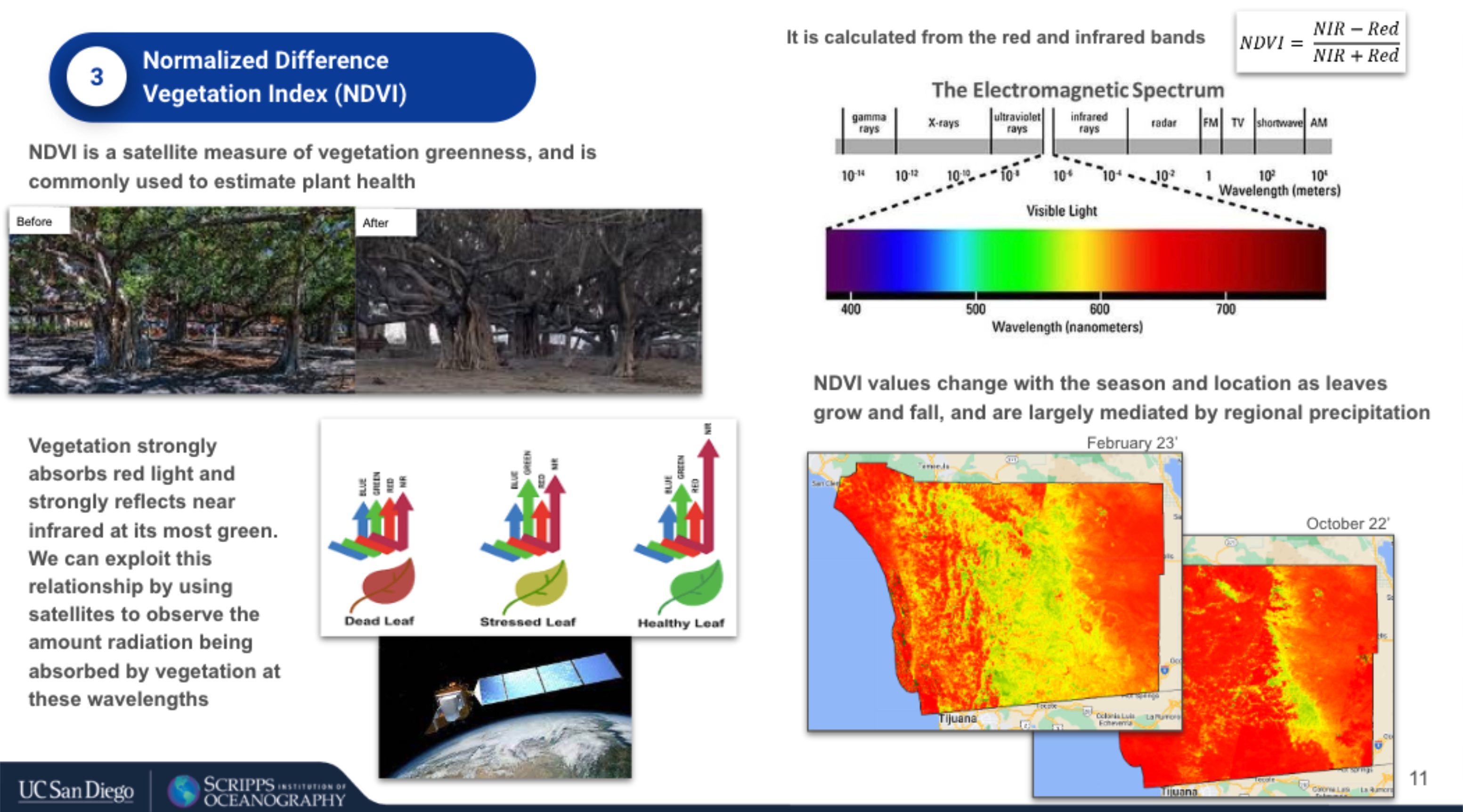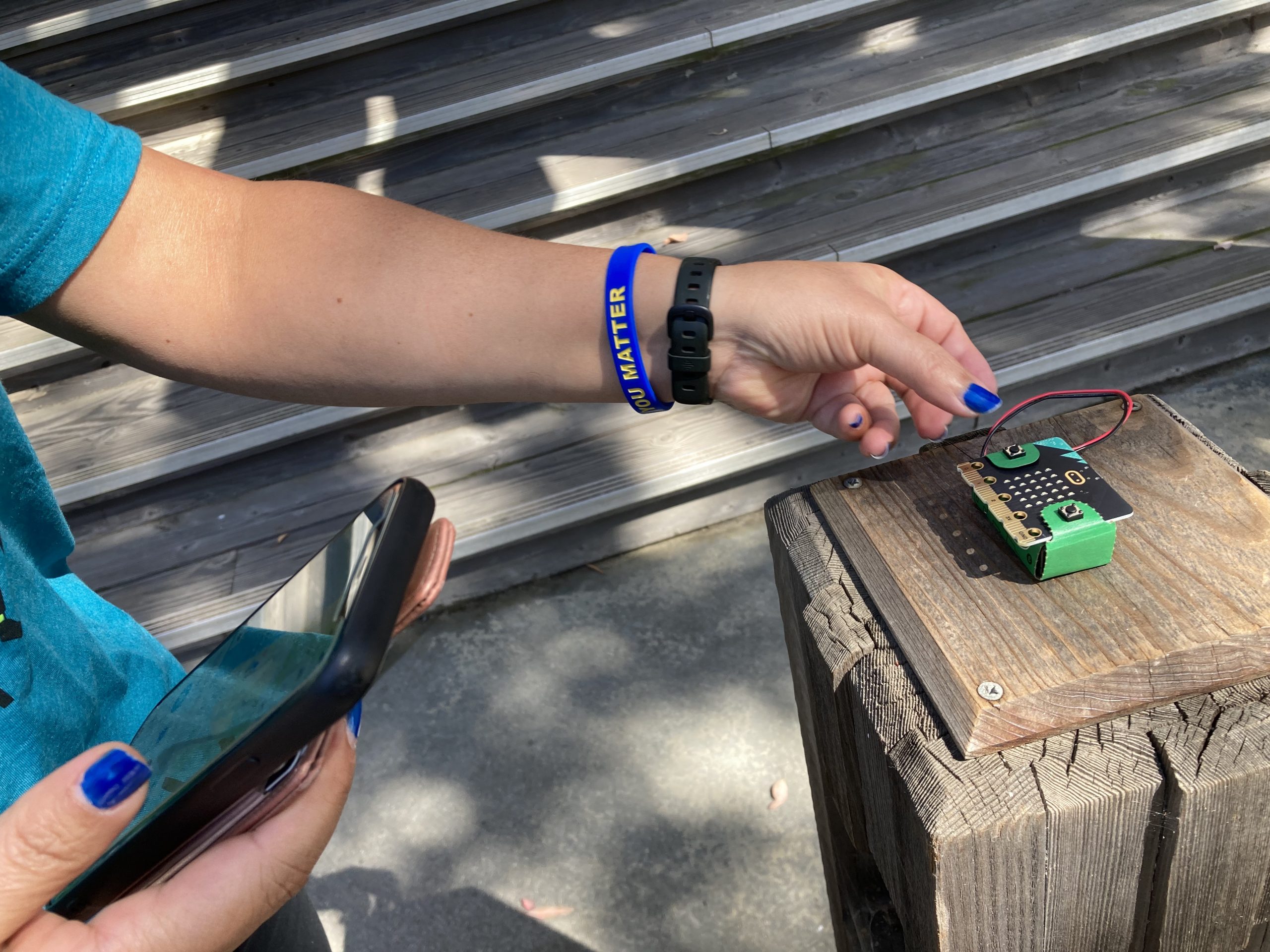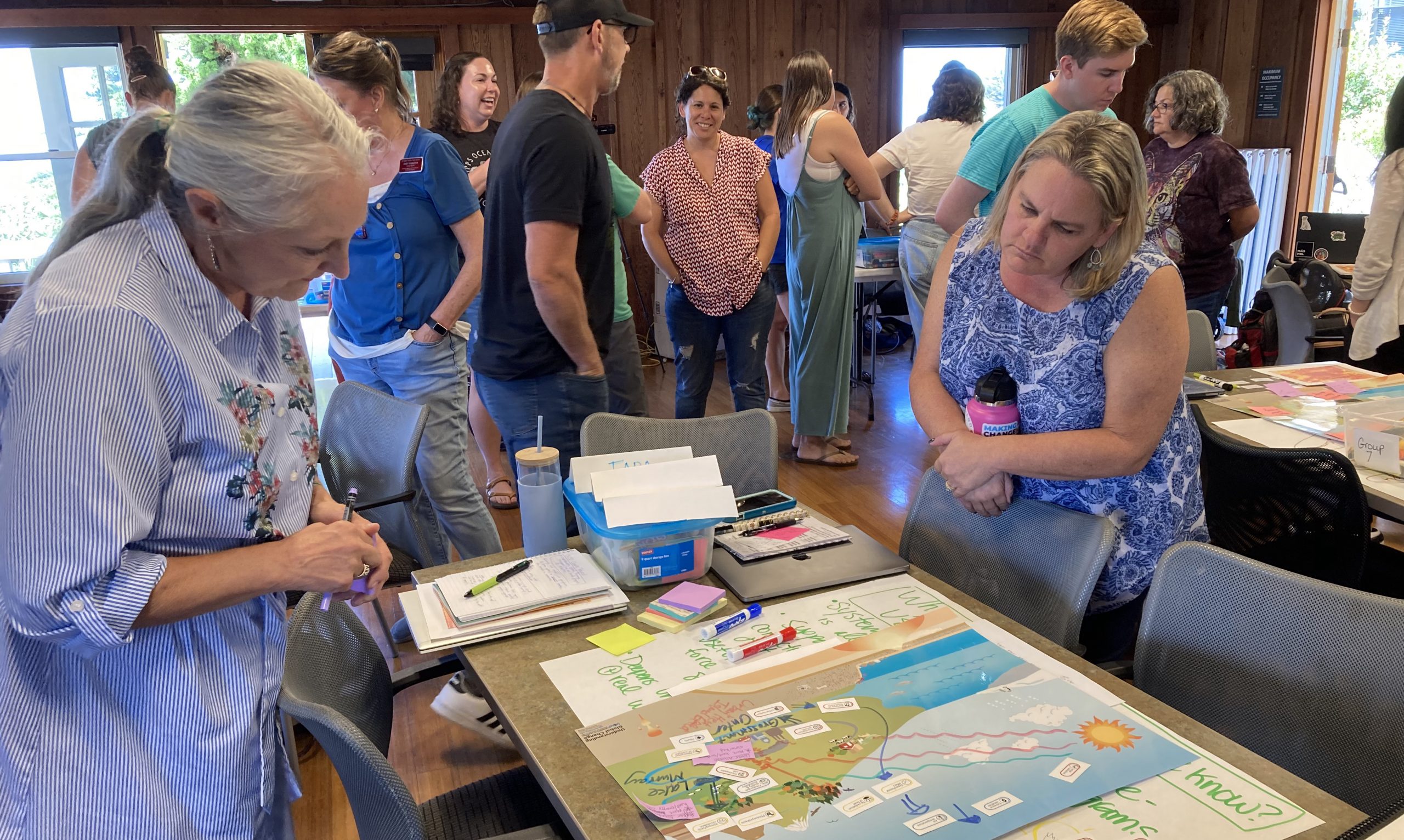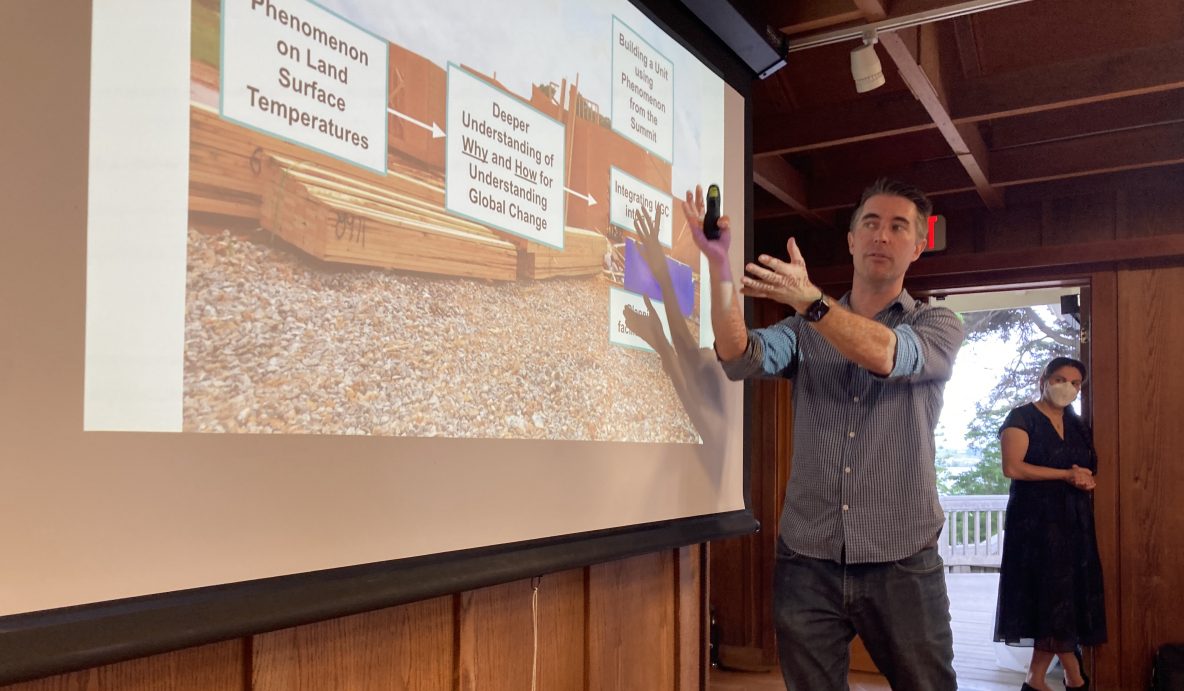Written by: Maren Hale and Nan Renner
On September 12th and 13th, Climate Champions and the San Diego Science Project (SDSP, at UC San Diego’s CREATE) hosted another summit in a series bringing together educators and scientists to explore heat phenomena within an Earth systems framework using Understanding Global Change (UGC). The event at Scripps Institution of Oceanography was led by SDSP’s Alec Barron alongside Jessica Bean of UC Berkeley’s Museum of Paleontology, who developed UGC, with support from Nan Renner, Birch Aquarium at Scripps and CREATE.

A slide from Laney Wicker’s presentation about Normalized Difference Vegetation Index (NDVI).
On the first day of the summit, Scripps PhD student Laney Wicker presented Land Surface Temperatures, Air Temperature, and Greenness, including a tutorial on how satellite data are used in this kind of research (see SDSP Teacher Researcher / Collaborative resources for more from Laney on this subject). Climate scientists Kristen Guirguis and Rachel Clemesha and CREATE Director Mica Pollock joined a lunchtime meet-and-greet with teachers, providing an opportunity for partners to meet the friendly faces behind the Heat Hub.
Toward the goal of community science to monitor heat and participatory data collection, educators worked with programmable sensors called micro:bit in a computer science training led by Rudy Escobar from Stanislaus County Office of Education. They engaged in early design discussions for the prototyping phase of Computer Science for Climate Action, an initiative integrated with the Heat Hub education effort, funded by the California Subject Matter Project.

An educator interacts with a micro:bit sensor. Photo by Nan Renner.
Like previous design summits, educators from multiple districts explored data related to land surface temperature and vegetation. They experienced hands-on learning about the heat absorption capacity of different materials with the support of Rachel Meisner from Castle Park High School in Sweetwater Union High School District. Of critical importance, they had time for curriculum planning using temperature and vegetation data visualizations (provided by Heat Hub scientists Laney Wicker and Maren Hale), within an Earth systems framework using UGC. An exemplary outcome of this collaboration, the Cooler Communities curriculum will roll out to San Diego Unified School District’s 84 STEAM Elementary Schools this year, under the direction of Zoë Randall.
Read more about a previous Climate Champions Design Summit here. Educators are invited to attend Teacher / Researcher Collaborative virtual events in October featuring Heat Hub scientists Sasha Gershunov and Tarik Benmarhnia. Stay tuned for more updates on our educational efforts!

Educators participate in a gallery walk activity to share and provide feedback on their UGC models for extreme heat. Photo by Nan Renner.
Header image caption: Alec Barron (San Diego Science Project) breaks down the objectives of the Design Summit. Photo by Nan Renner.

